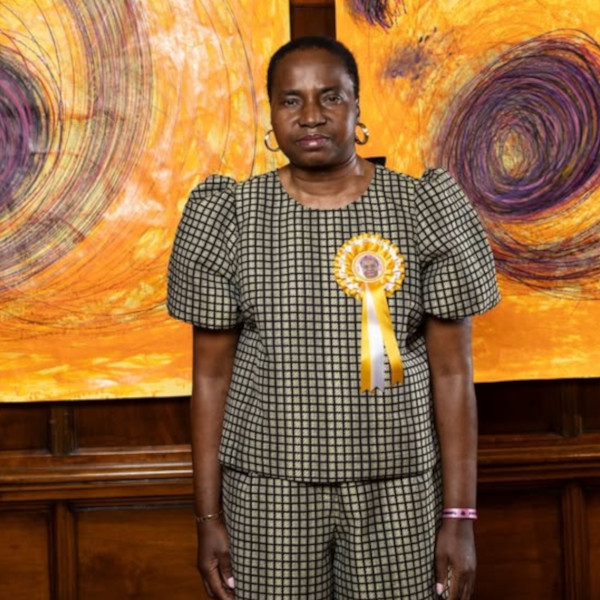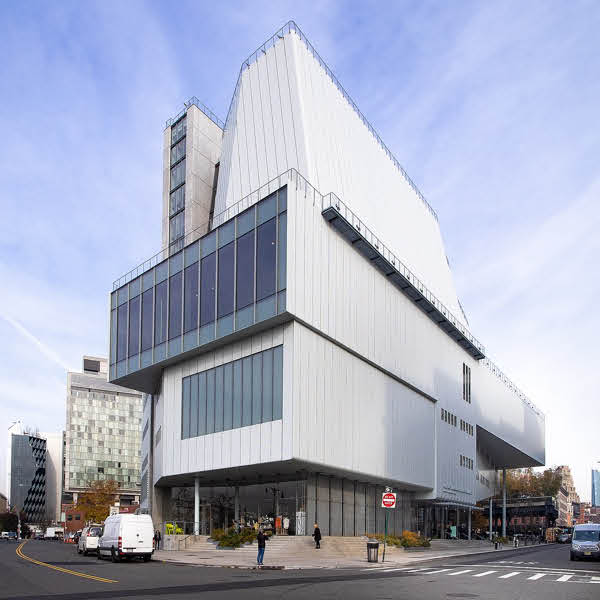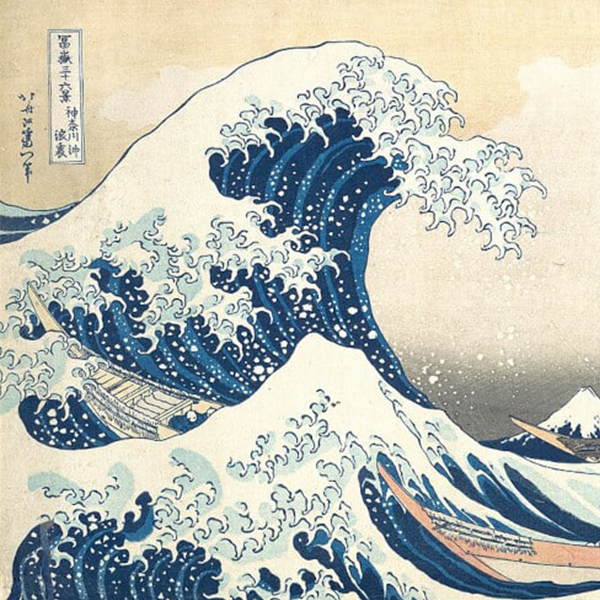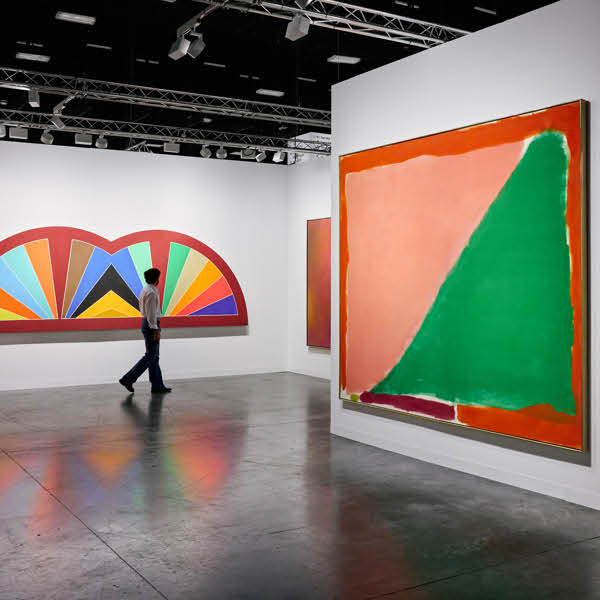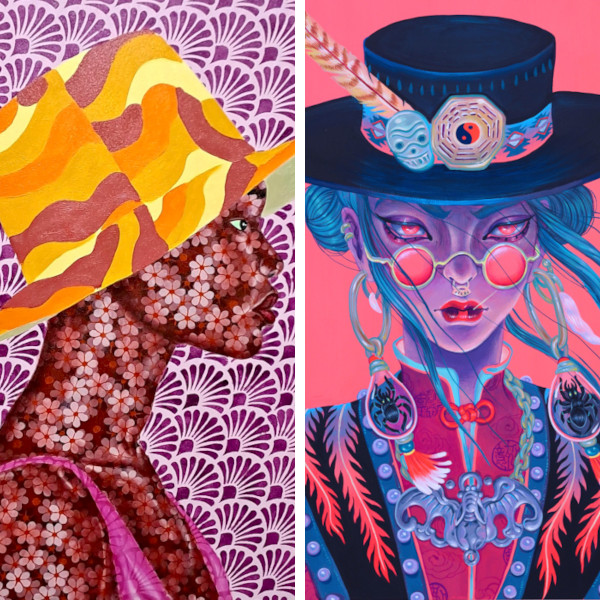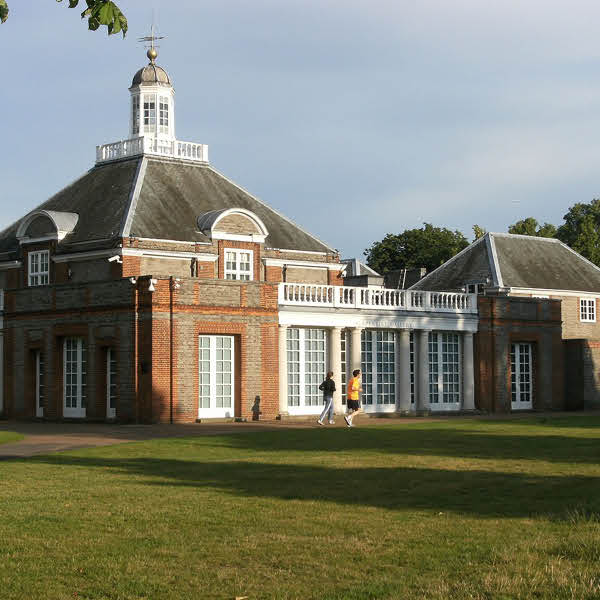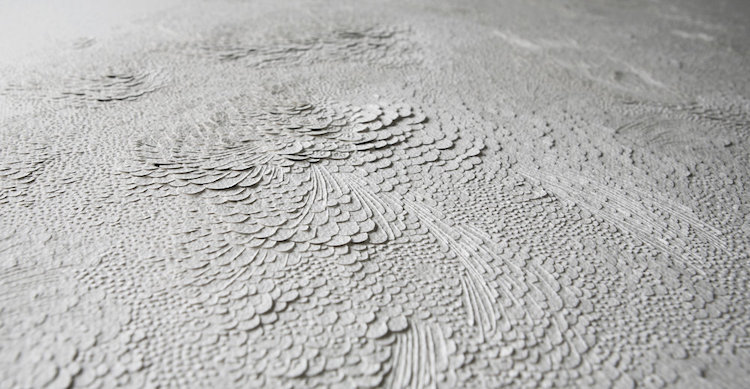
Artist Lauren Collin reveals exquisite textures from flat sheets of paper. Using a scalpel with surgical blades, she carves watercolor paper into “bas-reliefs” that are a dazzling collection of bristling scales in a variety of shapes and sizes. The details of her work are incredible; Collin uses the thickness of the material to create layers of scales that result in a surprising amount of depth. Considering that even the heaviest weight paper is still just millimeters thick, the expanse that Collin is able to produce is nothing short of impressive.
Light is a key component in Collin’s paper relief sculptures. The light reveals her forms by placing the scales in shadow and, as a result, highlights the metamorphosis that has occurred on the paper. It also showcases another amazing fact—that nothing is glued on. Collin slices the entire design from a single sheet. “If one were to glue everything back together,” she says, “one would have one simple sheet of paper. The multiple cut-outs give an idea of profusion and seem to quiver when exposed to light.”
We had the chance to chat with Collin about how she began creating incredible art, her process, and how light plays a huge role in her work. Read on for My Modern Met's exclusive interview.
Artist Lauren Collin creates paper relief sculptures bristling with scales.
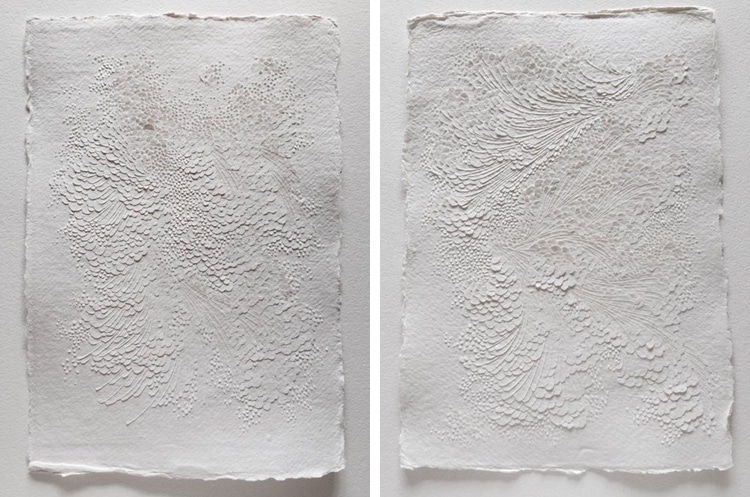
The dazzling designs feature scales in all shapes and sizes that are all cut from a single sheet of watercolor paper.
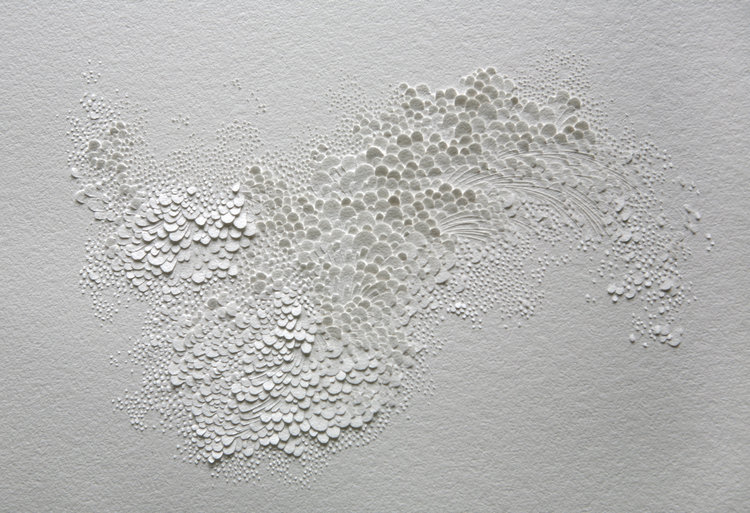
When did you start crafting bas-relief sculptures out of paper?
I started working on paper when I was in the preparatory school at the Atelier de Sèvres in 2006. At the time, I was transforming it to create volumes that I associated with portraits in lead pencil.
Then during my years at ESAG Penninghen (2007-2011) in interior design, I discovered a multitude of new papers by making my project models. Paper became more than a support, it was a real material because of its thickness, its texture, its hue. I scarred it with my cutter to evoke marble, wood, etc.
Once I graduated I continued to develop this technique of sculpted papers in parallel with my work in an agency at Gilles & Boissier. I wanted to discover all that was hidden in the thickness of a simple sheet of watercolor paper by sculpting with scalpels (tools of my father stomatologist).
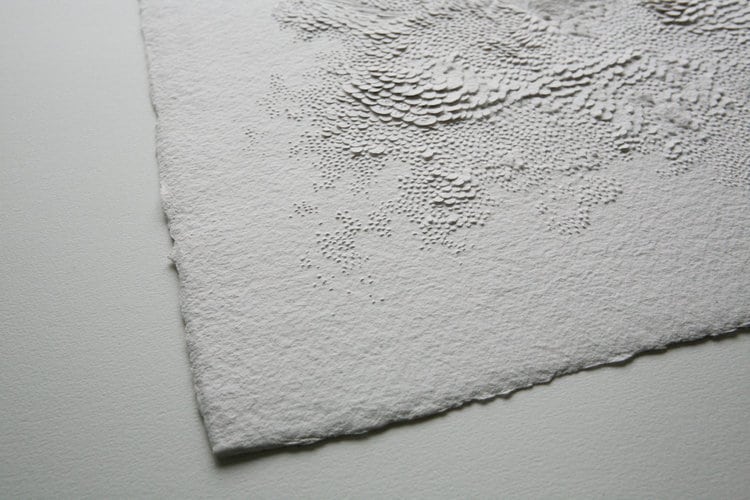
When you begin a piece, do you have a motif in mind, or do the abstract shapes form organically?
When I choose a sheet of paper it is because it inspires and arouses in me emotions that I translate by sculpting the paper. The composition is gradually drawn, the movements are born and revealed by the surrounding light. Each creation is unique because it reflects a moment of life that is ephemeral and turns into memories.
Light’s interaction with the paper “scales” is intrinsic to each piece. In addition to aesthetically altering the sculpture, does light play a symbolic role in your work?
Light is an indispensable and inseparable part of my work of carved papers. It reveals each work and directs its reading. You will never see the same room during the day because natural light allows this metamorphosis of the paper. I like that my creations can live in their environments, that they are not fixed.
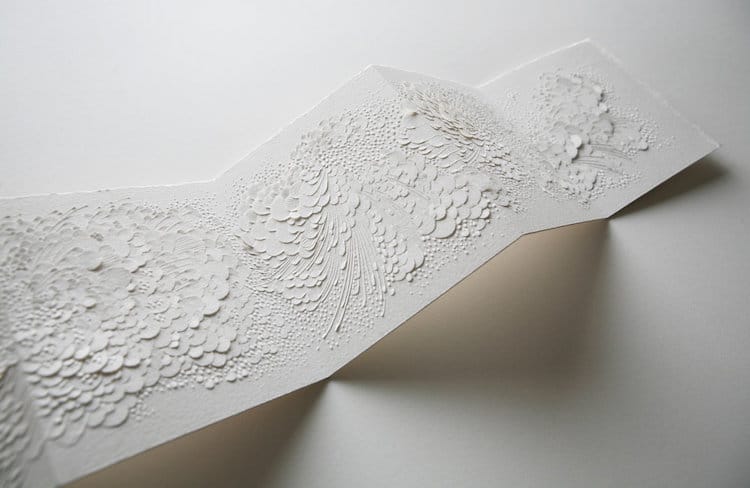
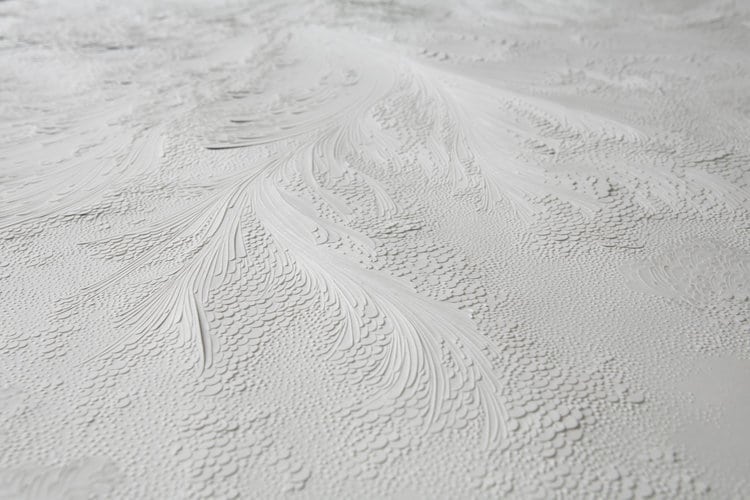
How long does it typically take you to complete one of your paper sculptures?
It varies depending on the paper used and the composition I have in mind. Some may be more difficult to carve because of their textures and their thickness. The density doubles or triples its creation time. I need a hundred hours of work to achieve a format 80x60cm, for example.
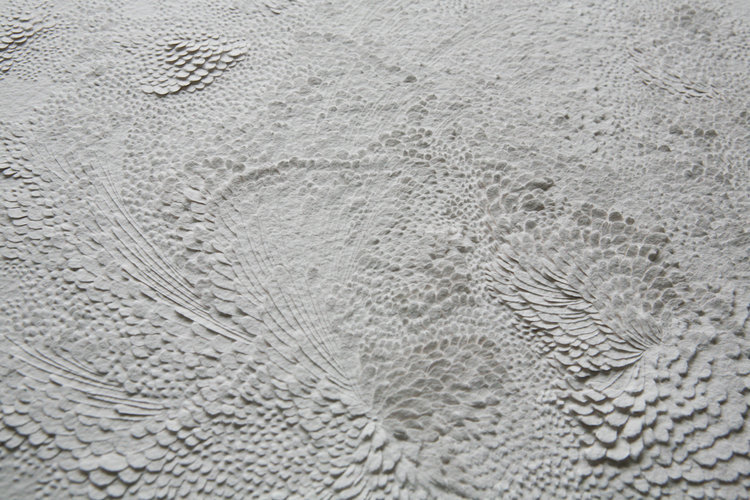
You have a background in interior architecture. Has this experience informed your paper practice at all?
I chose above all this way because I wanted to learn a trade. My experience in interior architecture has brought me the knowledge that is useful to me as an artist (materials, volumes, light, vision in space). It gave me a look and fanned my creativity to discover the paper differently.
This job also opened doors for me and brought in people who played an important role in my career.
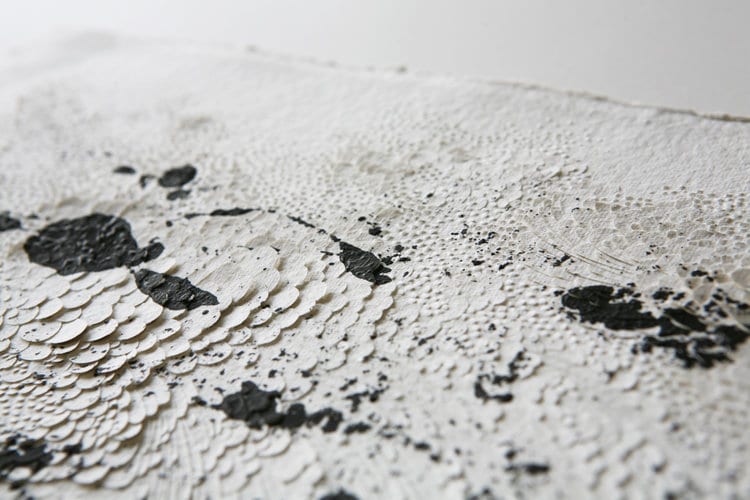
What tools and supplies do you use?
I work with surgical scalpels and papers from France and India. I am always looking for new papers and I hope that in the near future I could have my own paper made by craftsmen.
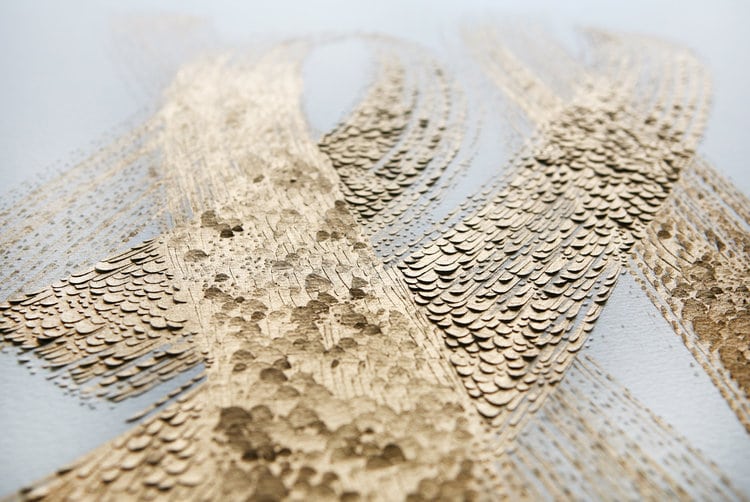
In 2017, you experimented with wax and watercolor strokes. Have you incorporated any other media into your sculptures since then?
I started working with an embroiderer to marry our techniques. This is a very interesting track that deserves to be deepened.
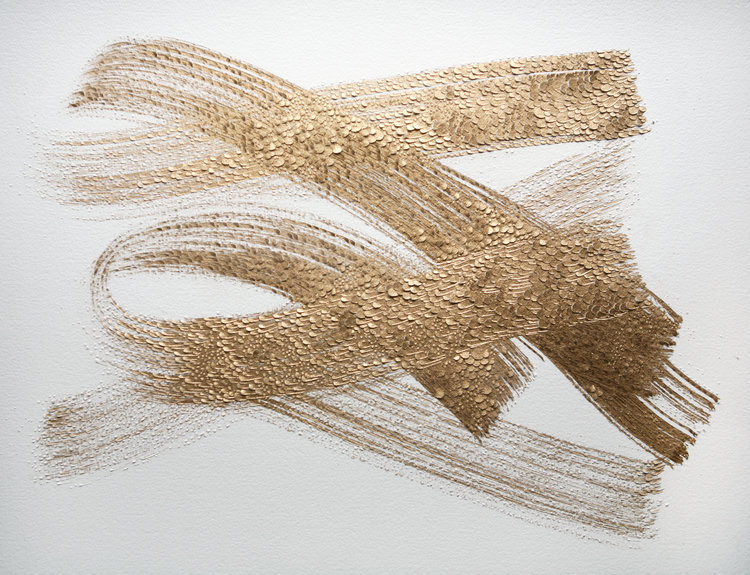
Do you have new projects in the works?
I would like to create my own papers by working with French and/or foreign craftsmen. This ancestral know-how is a source of inspiration and I would like to put it at the center of my artistic approach. Researching and developing new eco-friendly paper materials would be a culmination but also the beginning of another creative and human project.
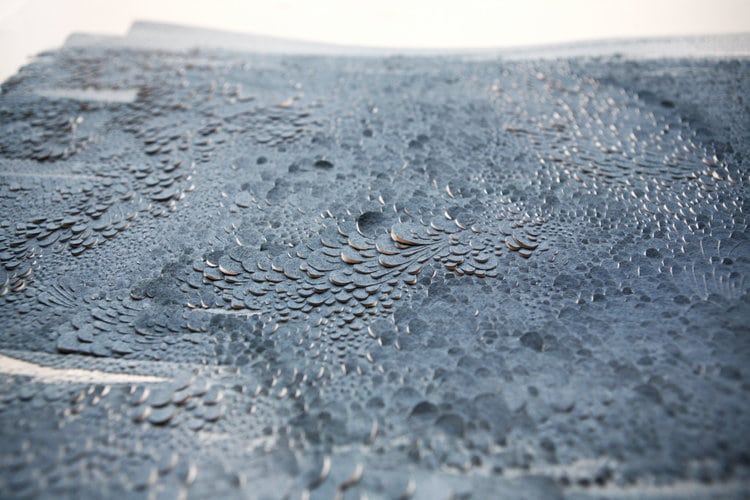
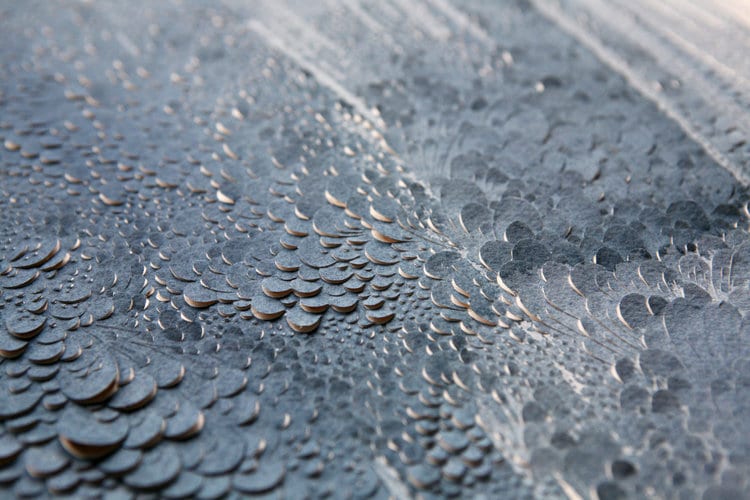
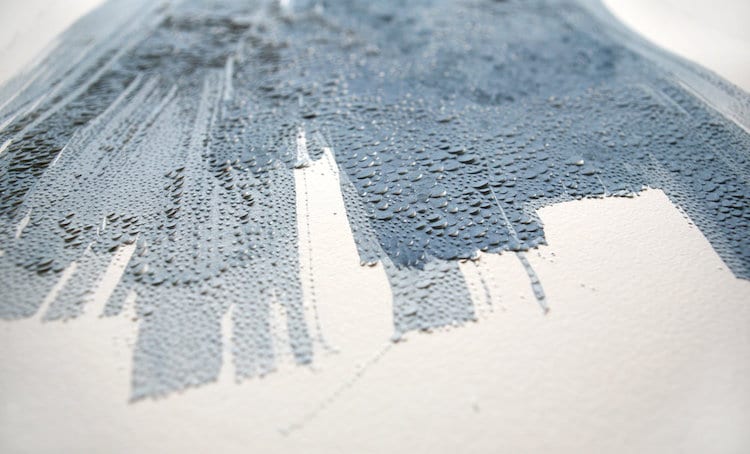
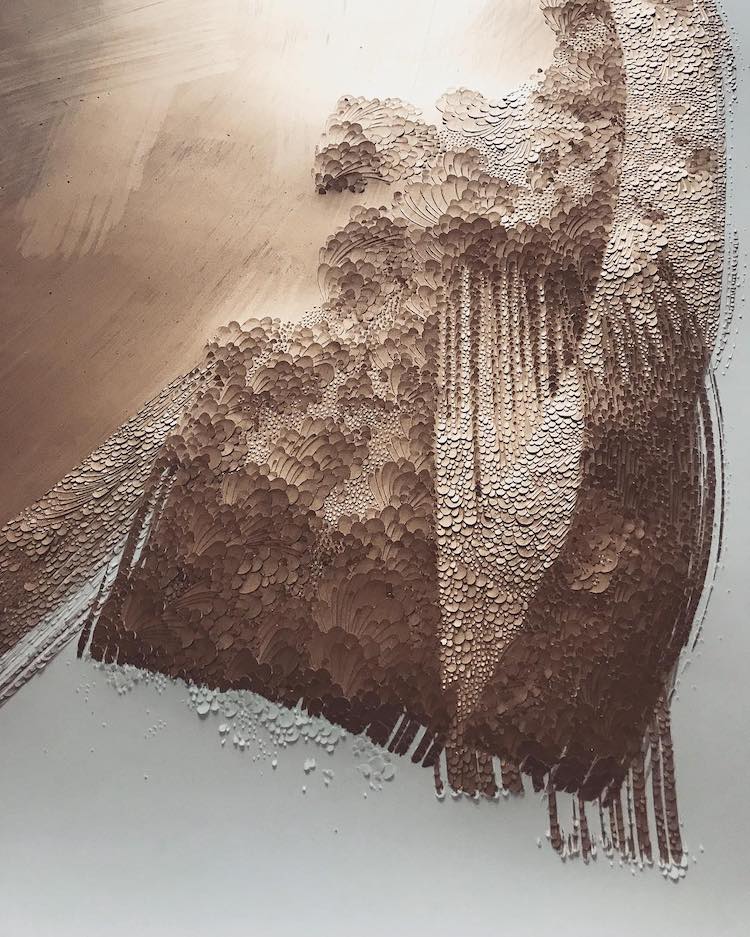
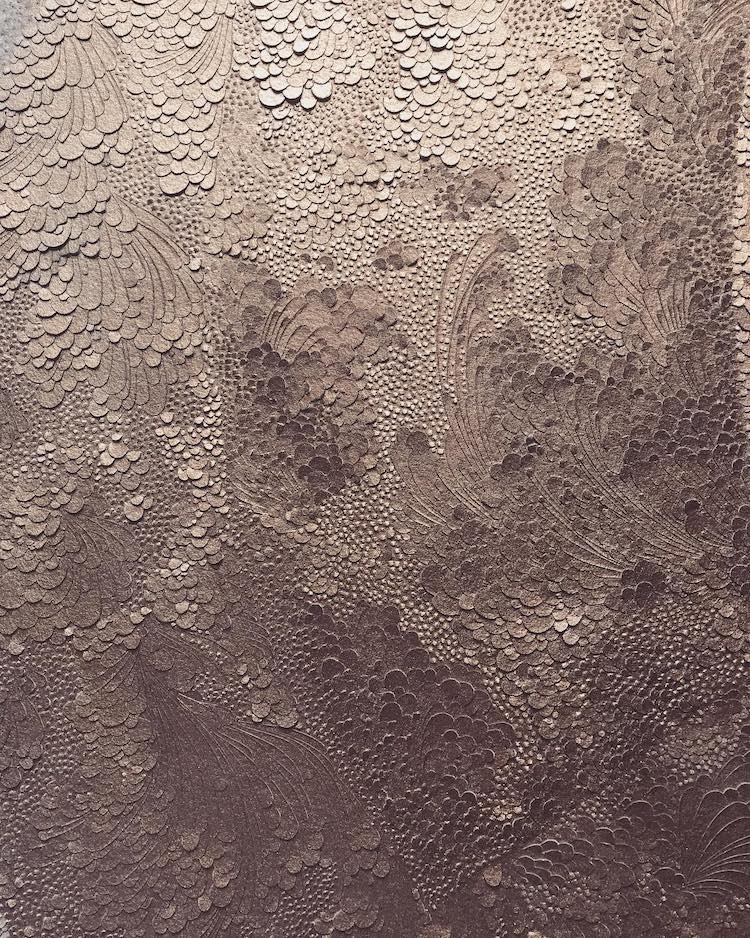
Lauren Collin: Website | Instagram
My Modern Met granted permission to feature photos by Lauren Collin.
Related Articles:
Artist Uses Engineering to Fold Mesmerizing Geometric Paper Sculptures
What Type of Paper Should You Use? Let Our Guide Help Find What’s Right for Your Art
Learn How Paper Quilling Started Centuries Ago and Why It’s So Popular Today













































































